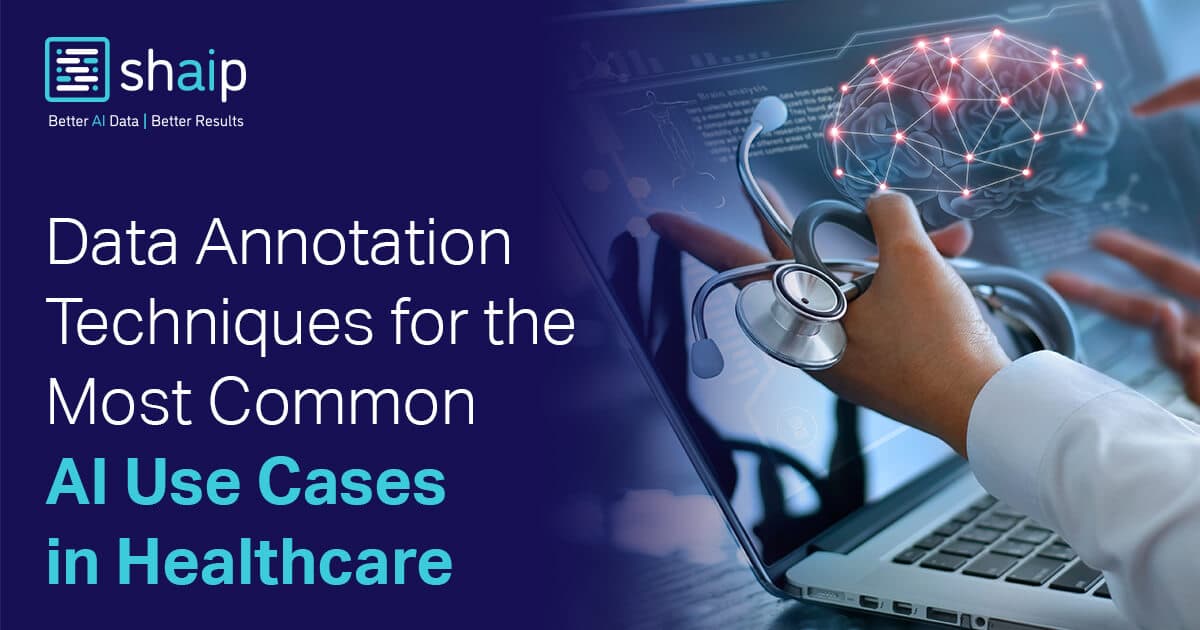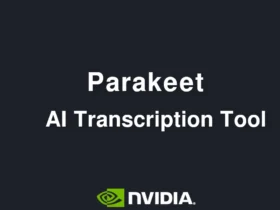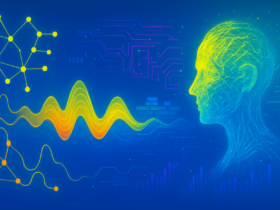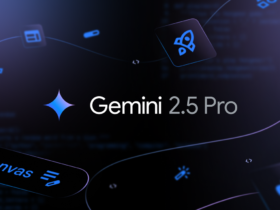The role of data annotation in healthcare AI is pivotal. High-quality data labeling and annotation directly impact the accuracy of AI training data and the reliability of AI use cases in healthcare. From diagnosing diseases using medical imaging to drug discovery and remote patient monitoring, annotated datasets form the backbone of modern healthcare AI systems.
In this article, we will explore the data annotation techniques used for healthcare AI applications, highlight the latest use cases, and address some common questions about medical data annotation.
What is Data Annotation in Healthcare AI?


Data annotation is the process of labeling or tagging data (text, images, audio, or video) to make it understandable for AI models. In healthcare, it involves annotating complex datasets like medical images, electronic health records (EHRs), and clinical trial data to train AI systems.
For instance, AI models for cancer detection require annotated datasets of X-rays or MRIs to identify tumors accurately. Without proper annotation, models fail to deliver precise results.
1. Chatbots for Clinical and Patient Support
Use Case
AI-powered healthcare chatbots are transforming patient care by:
- Booking appointments
- Analyzing symptoms
- Offering mental health support
- Answering post-surgery queries
Annotation Techniques
To train chatbots for healthcare, annotation experts use techniques like entity recognition, intent labeling, and sentiment analysis. This ensures that chatbots understand medical terminology and patient emotions.
Example
A Covid-19 chatbot uses annotated datasets of patient symptoms and clinical guidelines to provide accurate preliminary assessments. Tools like Northwell Health’s chatbot reported a 96% increase in patient engagement.
2. Digital Imaging Annotation for Diagnostics
Use Case
AI systems are revolutionizing medical imaging by assisting in diagnosing conditions from:
- MRI, CT scans, and X-rays
- Thermal imaging for cancer detection
- 3D imaging for surgical planning
Annotation Techniques
Annotation techniques such as bounding boxes, semantic segmentation, and keypoint labeling are used to tag anomalies like tumors, fractures, or irregular tissue growth.
Example
AI-powered breast cancer detection systems use annotated datasets of thermal imaging to identify early signs of cancer. These systems reduce the chances of oversight in diagnostics and improve patient outcomes.
3. Drug Discovery and Development
Use Case
AI accelerates drug discovery by analyzing chemical interactions, medical journals, and clinical trial data. It also enables personalized medicine with tailored drug recommendations based on individual health data.
Annotation Techniques
Annotators label datasets like:
- Electronic Health Records (EHRs)
- Clinical trial data
- Wearable device metrics
- Radiology and genetic data
Example
During the COVID-19 pandemic, AI systems processed millions of research papers to fast-track vaccine development. Today, AI assists in recommending personalized medications for patients with chronic conditions, improving treatment effectiveness.
4. Remote Patient Monitoring and Post-Care Assistance
Use Case
AI-powered solutions are enabling remote patient monitoring by analyzing data from wearable devices, clinical records, and conversational interactions. These systems track:
- Vital signs
- Medication adherence
- Post-surgery recovery progress
Annotation Techniques
Time-series annotation and audio/text tagging are used to train AI systems for detecting irregularities in patient health data.
Example
Wearable devices like Fitbit and Apple Watch use AI to monitor heart rate and oxygen levels. Annotated datasets help these devices predict health risks like atrial fibrillation.
5. AI-Powered Disease Outbreak Prediction
Use Case
AI systems can analyze global health data to predict disease outbreaks and allocate resources effectively. For example, they can predict flu seasons or track the spread of pandemics like COVID-19.
Annotation Techniques
Geospatial data, epidemiological reports, and patient datasets are annotated to enable disease tracking and forecasting.
Example
AI platform BlueDot used annotated datasets to predict the initial spread of COVID-19, enabling governments to respond faster and allocate medical resources more efficiently.
6. Advanced Genomics Analysis
Use Case
AI is increasingly used in genomics to identify genetic markers associated with diseases like cancer and Alzheimer’s.
Annotation Techniques
Annotators label genomic sequences and integrate them with health records to train AI models for genetic risk prediction.
Example
AI systems like DeepGenomics analyze annotated genomic data to predict the impact of genetic mutations, enabling the development of targeted therapies.
7. AI for Health Insurance Claims Processing
Use Case
AI automates health insurance claims processing, reducing fraud and speeding up approvals.
Annotation Techniques
Annotators label EHRs, insurance documents, and patient histories to train models for fraud detection and claims management.
Example
AI systems use annotated datasets to detect inconsistencies in claims, saving insurers millions annually.
8. Virtual Reality (VR) for Rehabilitation
Use Case
AI-powered VR tools are helping patients recover from physical injuries or mental health challenges, such as PTSD or stroke.
Annotation Techniques
Motion capture data, therapy sessions, and patient interactions are annotated to train AI systems for adaptive rehabilitation.
Example
VR platforms like MindMaze use annotated therapy session data to personalize recovery exercises for stroke survivors.
9. Predictive Analytics Using Wearable Devices
Use Case
Wearable devices equipped with AI predict potential health risks by analyzing metrics like heart rate, sleep patterns, and stress levels.
Annotation Techniques
Time-sequence labeling and event tagging are used to process data from wearable devices.
Example
Apple Watch’s ECG feature, trained on annotated datasets, alerts users of atrial fibrillation risks, improving preventive care.
Conclusion
From chatbots to predictive analytics, data annotation techniques in healthcare AI are crucial for creating effective and reliable solutions. As newer technologies like genomics analysis, VR rehabilitation, and disease outbreak prediction emerge, the demand for annotated AI training data will only grow.
If you’re looking for high-quality medical datasets or expert annotation services, connect with Shaip to transform your ideas into smarter AI solutions.













Leave a Reply